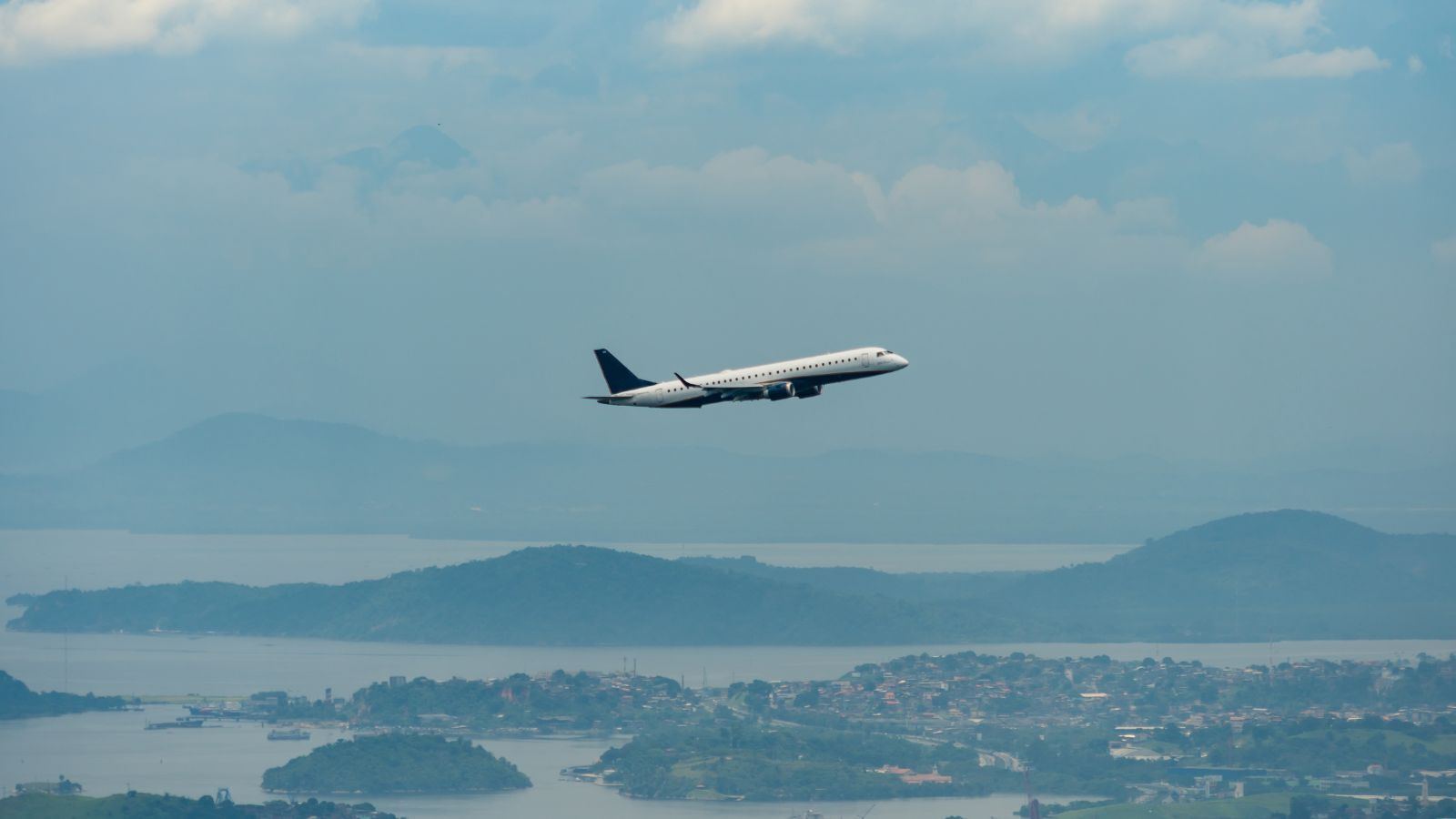Few markets have experienced such turbulent growth in the aviation sector as Latin America, where often the factors behind the turbulence are entirely outside of the airlines’ control. This, once again, highlights how challenging it is to successfully build and sustain scheduled airlines.
Sadly, Latin America’s history is marked by the collapse of once-prominent legacy airlines, including globally recognised names such as Varig. Despite this, there have also been various pieces of consolidation and strategic mergers that have seen carriers both survive and expand over time.
In the last five years, the three largest locally based airlines in Latin America have all filed for Chapter 11 bankruptcy protection. Encouragingly, all have either exited or are about to exit from the process stronger and ready to fight again. Looking ahead, the key question remains: what’s different this time? Has anything fundamentally changed in the market that will enable these airlines not just to survive, but flourish? Or will we see a repeat of the seemingly regular cycle of boom and bust? Let’s look at some key factors.
Domestic Markets Dominate
In most regional markets it’s very difficult to make a profit, and while they can generate significant revenues in Latin America, some domestic airfares are regulated in part, which makes it even harder for the locally based airlines. In the table below, we have plotted ASK production by locally based airlines across both domestic and international networks since 1996:
- In 2025, 59% of all capacity will be operated on domestic services, which is a higher proportion than reported in 1996, when 52% of capacity was operated on such routes.
- Nearly 90% of all flights operated by locally based carriers are on domestic services, and that seems to be an unhealthy proportion for any airline seeking profitability.
Fierce Regional International Competition
Part of the challenge of the broader market - and particularly Lower South America - is the limited number of regional markets for development. Lower South America has just five mainland markets (excluding the Falkland Isles), and 95% of all international capacity is operated purely within the region, making for an extremely competitive market. In Upper South America, that regional capacity share reduces slightly to 86%. In both cases, a high reliance on the local regional markets places pressure on those airlines operating, which is reflected in the number of scheduled airlines operating in the international regional markets of Lower South America.
As the table below shows, the number of airlines operating international regional services in Upper South America has reduced by eight, compared to 1996. In the Lower South America, the number of operators has fallen by nearly two-thirds, leaving 12 airlines today. This highlights just how challenging the market can be for every operator.
Such a highly competitive market and the difficult trading environment explains one of the key developments of recent years in the Latin American market: pragmatic cross-border consolidation.
Embracing Consolidation
While airline mergers are not new, cross-border mergers and partnerships are a relatively new development in an industry where airlines have been seen by many as national strategic assets to be owned by local companies. Such historic ownership rights, in many markets, protect weaker operators from overseas investment and prevent the establishment of a market scale that is necessary to succeed in tough international markets. However, in Latin America, such cross-border consolidation has been recognised as the only sensible long-term operating model for airlines that are not only competing locally but with some extremely strong long-haul international competition.
The merger of LAN and TAM airlines in 2012 was the first noticeable example of such cross-border consolidation and was finally followed by the merger of TACA and Avianca – with, of course, the TACA part adding an interesting Central American angle to that development. The primary goal of both mergers was to create airlines with the scale and network reach necessary to withstand short-term market fluctuations and, ultimately, to compete effectively on the global stage against large and formidable international carriers. Since the mergers, both newly formed entities have expanded their networks significantly and have engaged actively with global airline alliances. While LATAM chose to exit the Oneworld alliance in 2020, Avianca has remained a full member of Star Alliance.
Unfortunately for both consolidated airlines, a series of events in the last five years have led to both entering Chapter 11 processes and indeed exiting in the last three years; LATAM in November 2022 and Avianca a year earlier in 2021. While Chapter 11 is a strange process for many to understand and only possible in a few countries, both airlines filed their cases in the United States and sought the necessary protection to reorganise their businesses and become fit for a changing market after a pandemic that had destroyed their balance sheets. But having taken such steps, have the two airlines - and will the current Gol/Azul merger - make a significant difference to their long-term futures? There are certainly some big challenges that have to be faced!
Incredibly Strong Competition
If competition is good for the consumer, then the Latin American market is well placed. However, for the locally based airlines, that competition is extremely tough - not only are they competing against the likes of American Airlines, United and Iberia, they are also competing with their respective networks - and for the local airlines, that is a real challenge.
Let’s take the US market as an example. In 2024, nearly two-thirds of passengers travelling between the two countries travelled indirectly to their destination and were spread across more than three hundred different US destinations, ranging from Miami with 865k estimated bookings through to small markets such as Lubbock with an estimated 1,600 passengers. For US-based airlines (and their respective mega hubs in Miami, Houston and Atlanta), Latin America serves as a valuable source of connecting traffic, which the locally based airlines find very hard to compete with.
The situation is equally as challenging on transatlantic routes to Europe. In 2024, Iberia, leveraging its Madrid hub, benefited from strong connecting flows from secondary European cities like Geneva, Malaga, Vienna, and Berlin—markets that are too small to sustain direct long-haul services from Latin American airlines.
Market fragmentation is nothing new, but clearly favours the power of the mega hubs and explains why those carriers with such hubs are so well placed. However, other factors outside of the control of the locally based Latin American airlines are perhaps even more important.
The Power of The Greenback
Aviation is a global industry in which many of the operating costs are US dollar-based, and for airlines operating in Latin America, this is a real problem when the majority of their revenues are generated in local currencies that have typically traded poorly against the US Dollar.
While the Brazilian Real has remained unchanged in terms of value against the US Dollar in the last year, the Argentinian Peso has seen a 33% reduction in value, making all operating costs for Argentinian-based carriers increase significantly in twelve months. In part, a 13% reduction in oil prices will have eased some of that currency pain, but the combination of these two uncontrollable factors are a daily concern for every Latin American airline, and any global economic turndown will surely impact the Latin American market.
IATA Latest Market Assessment
The latest IATA assessment of the Latin American market, published in their Global Outlook Update in early June, highlighted some key areas of concern for the market along with one perhaps double-edged positive initiative. Argentina’s move towards an open skies regime is welcome, although the current currency weakness offsets a large part of that positivity, while the threat of a 26% VAT charge of Brazilian domestic services will cripple demand for all but the very elastic and wealthy traveller.
Consequently, the 2025 expectation is for the market to deliver a net profit of some US$1.1 billion, the equivalent of around US$3.4 profit per passenger, hardly a huge return for such a capital-intensive industry. Should 2025 perform as expected, then the cumulative losses in the region will be in the region of US$20.3 million, and while those losses include the pandemic period in financial terms, the market is one of the slowest to bounce back.
Despite the vulnerability of the market, and perhaps not surprisingly, Boeing have a positive outlook on the future of the Latin American market. In their latest Market Outlook Forecast the manufacturer notes the strength of the emergence of a middle class that includes 40% of the population in Latin America and expects that proportion to grow further, driving continued expansion of the LCC sector. To support that growth, Boeing forecast the market to require an additional 2,100 single-aisle aircraft over the next twenty-five years, of which 57% will be for market growth.
Sadly, the future success of the major Latin American airlines is probably outside of their control, however clever the management team and the strategy adopted. Such is the influence of those external factors in this market that even the best-managed companies can hit some major obstacles in their growth, and that’s before the intense competitive pressure is considered. Hopefully, we are entering a boom period for these airlines and the broader market, but if history is an indicator of future events, then at some point it will once again call for some creative thinking.








